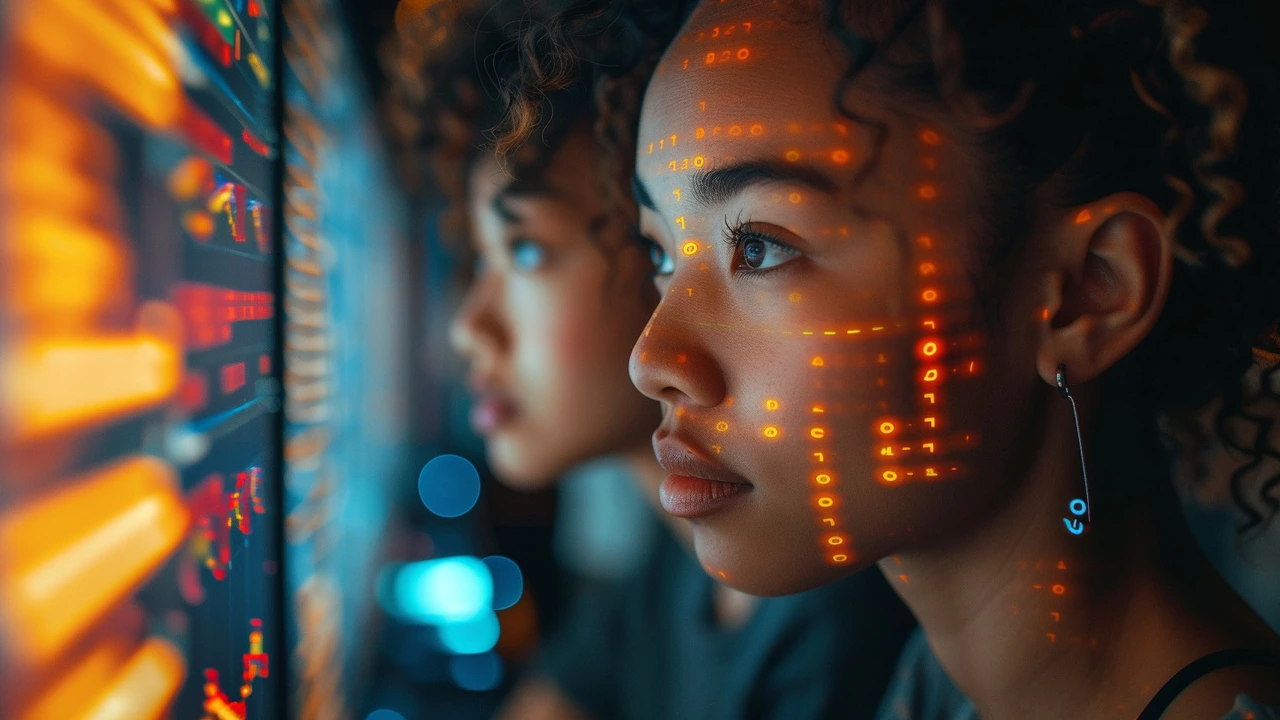Unveiling the Veil: How AI Powers the Technological World
From suggesting what movie to watch next to predicting the exact time I will reach home from the grocery store, Artificial Intelligence, or as I affectionately like to call it, AI, has a noteworthy influence on our daily lives. Though it might seem like magic made by tech wizards, it's actually based on systematic algorithms and codes, similar to how my delightful kids, Cassandra and Bryce, operate with video games. Not unlike deciphering a game's cheats and secret codes, the realm of AI and its implementations requires a similar decoding lens.
Behind the Bytes: Unmasking AI Algorithms
Just like a master chef preparing his signature dish, AI programs blend several algorithms and procedures to create the perfect result. They map out the 'if-this-then-that' scenarios sprinkling with a dash of 'do-this' or a spoonful of 'do-not-do-this'. This kind of precision is kind of reminiscent of the way my son Bryce plays Fortnite. He deftly maneuvers his way while bonding with his game comrades and staying a step ahead of an imminent virtual storm.
However, it's not just about the right code, but also how you train the program to adapt and learn. Kind of like how I condition Cassandra and Bryce to perform chores around the house, making it a game of who cleans their rooms faster. Here's an intriguing fact—this is called supervised learning in AI where we provide inputs and the corresponding correct outputs (clean tidy room) while the AI model learns the underlying rules.
Neurons for Machines: Demystifying Neural Networks
One trick in AI's book is the Neural Network. It's nothing more than our brain-inspired networks helping the machines think and learn. However, just as one egg doesn't make a pancake, one neuron won't suffice. We need a whole network, akin to an intricately interconnected assembly of neurons in our brains.
Imagine you're tasting a recipe for the first time. The different spices, textures, and aromas work synchronously, allowing you to decide whether it's a hit or a miss. Same way, different layers in the network process different information types, contributing various perspectives to the final output, making it richer and more nuanced.
A Peek Into Machine Learning: Decoding Decision Trees
Ever felt confused picking an outfit for a particular event? You systematically eliminate choices based on factors like the event type, weather, your mood, etc., right? This is partly how decision trees in Machine Learning work.
Here's a fun story. Once, my children and I planned a surprise theme party for their mom. The decision-making process included a lot of back and forth. Do we go with a Star-Trek or a Harry Potter theme? Does the local store have enough decorations? Decision trees work similarly—traversing through several options, weighing choices, and zeroing down on the best one.
In the Eyes of the Machines: Exploring Computer Vision
If you've ever marveled at how Google Photos recognizes and sorts pictures of the same person, even when they've aged over the years, you have AI’s Computer Vision to thank.
This technology allows machines to interpret and understand visual world just like we do. For instance, my daughter Cassandra once drew a picture of our family, including our chubby English bulldog. Through the lens of computer vision, the AI system would identify it as a family portrait, despite the crude lines and unusual representation of our loyal pet.
Final Thoughts: AI as the Invisible Workhorse
One thing is clear: AI is the Sherlock Holmes of technology—astute, perceptive, and constantly learning. But, like having a bowl of soup with a fork, it can be equally tricky and confusing. The moral of the story? Embrace AI, but do remember that like my young ones wielding the vacuum cleaner for the first time, it can sometimes have amusing and unintended consequences.
Notwithstanding its quirks, AI is transforming technology right under our noses, in ways we don’t even realize. Just as my kids have grown independent, doing their chores without much intervention, our technologies too are becoming more autonomous and increasingly intelligent, thanks to AI. However, at the end of the day, AI has some growing up to do and we are only beginning to uncover its broader implications.
Despite its omnipresence, many of AI's subtleties remain covert or unnoticed. I hope this article illuminates how AI is doing more than merely existing—it's cooking up the secret sauce of the tech giants.

